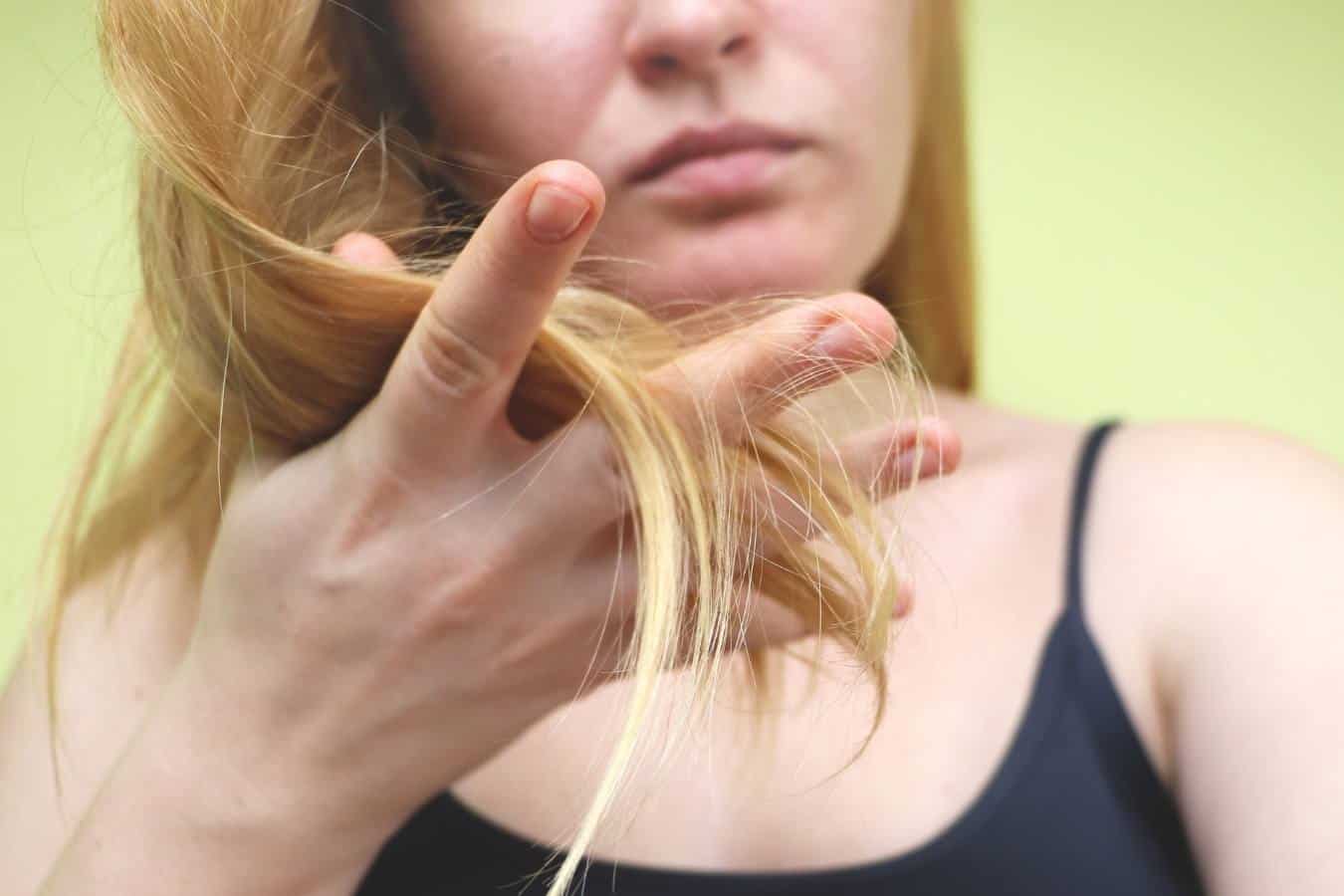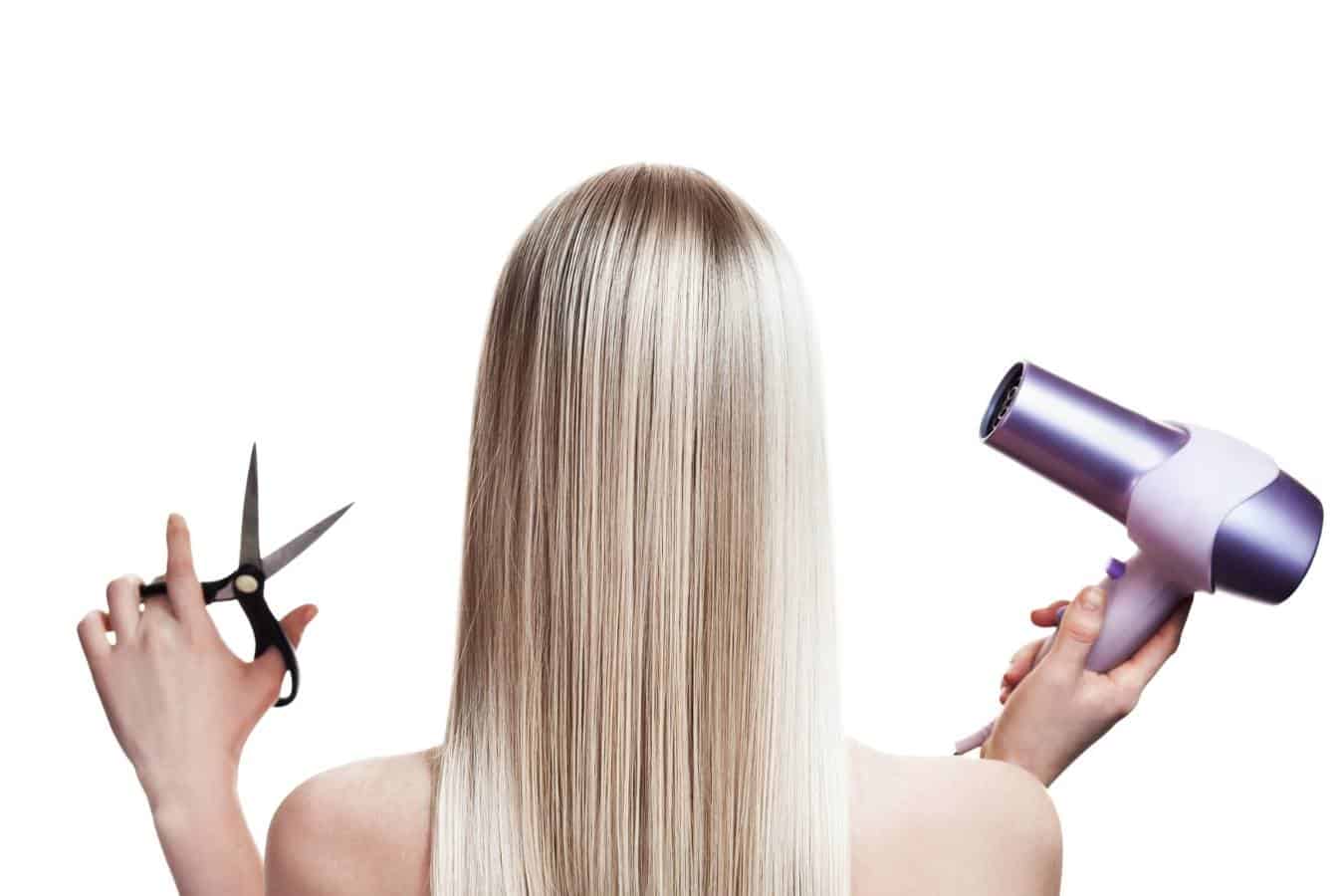It has never been easier to bleach and color your hair at home. However, it’s important to ensure you follow instructions carefully, otherwise, you could end up with uneven bleached hair.
In this article, we show you exactly how to avoid this problem.

There are three ways to fix uneven bleached hair. They are:
- Dye your hair a darker color
- Bleach your hair again
- Use toning shampoos
Read on to find out exactly how to use these simple methods.
Causes Of Uneven Bleaching
There are a number of reasons why you may experience uneven bleaching.
Some might be self-inflicted – whether you mixed and applied the product correctly, for example – but others are harder to control for, like your hair’s porosity.
You started with a dark base color
If you are dark-haired – think brunettes or black – then you will naturally have tones like orange and red in your hair.
Bleach works to lift these tones, which can result in your newly bleached hair coming out with these colors rippling through it. At worst, your whole head of hair might end up red or orange.
Your hair’s porosity
If you frequently color your hair, your hair is more likely to be porous.
Essentially, this means that it won’t take as well to the bleach, which can end up with it looking uneven.
You can help to mitigate this by caring for your strands in between bleaching sessions, rebuilding their bonds, and moisturizing.
You didn’t mix the product correctly
The amount of bleach that you need will vary from the next person, because your hair type, texture, and length are different.
You should therefore take care to follow the manufacturer’s instructions, and ensure that you’re effectively measuring and mixing your developer and bleach.
If your ratio of either is off, it will very likely result in uneven bleaching. Getting this right from the off can help you avoid having to fix a bad job.
Remember that as well as mixing the product correctly and applying it consistently, you need to leave the bleach in for the amount of time specified.
If you’re impatient, you’ll very likely end up with a less than ideal final look. A minimum of forty minutes is standard.
It’s worth ensuring that you use the right quantity and quality for you – if you have any doubts, it’s worth spending the time and money to ask a stylist in a salon.
You didn’t apply the mix evenly
This is an obvious one, but you need to be sure that you cover your whole head of hair so that the bleach is evenly distributed. If you miss spots, you’ll end up with uneven bleaching.
It can be helpful to ask a friend to assist with the bleaching process if you’re in doubt as to your own ability.
Starting at your ends and moving up to your roots is the best strategy for the application. This means that any heat from your scalp won’t impact the bleach’s processing ability.
It’s also a good idea to section your hair during the application.
What Happens To Your Hair During Bleaching?
Bleaching is a chemical process. It’s for this reason that it can be damaging and seriously dehydrate your strands.
When you bleach your hair, an alkaline agent opens up and raises your hair cuticle.
This allows the bleaching agent to penetrate your strands, so that the bleach can strip the melanin in your hair, replacing it with your new color of choice.
It does this by a process of oxidation, which dissolves your natural pigmentation. In doing so, the bleach can lift other tones in your hair.
If you have naturally darker hair, these are likely to be orange and red. As such, you may end up with brassiness, or flashes of these colors in your hair after bleaching it.
If you repeatedly bleach your hair, your cuticle will remain raised.
As a result, your hair is less able to hold moisture and will become dry, frazzled, and prone to breakage and split ends.
It’s therefore essential that you maintain your hair’s health between bleaching sessions.
Use products with keratin in, so as to restore your hair’s bonds and protein, and moisturize with humectants (products that contain water as their primary source of hydration).
You should also seal your strands with oils including coconut and castor.
How To Fix Uneven Bleached Hair

There are three main ways to fix unevenly bleached hair.
The right one for you will depend on how unevenly your hair has been bleached, as well as your hair’s health:
1. Dye your hair again, but darker
This is the fastest method to fix unevenly bleached hair. If you follow this approach, it’s best to match your new color with the darkest shade in your hair.
It’s a swift fix and can be easily done – all you have to do is buy another box of color and go through the bleaching and coloring process again.
Your hair should come out with a uniform color, and any unevenness will be covered over.
Bear in mind, however, that you will be re-bleaching your hair after a very short period of time.
This can cause serious damage and dehydration, so this process should only be performed if you’re desperate.
2. Bleach your hair again – in time
This is the process that we recommend following in order to fix uneven bleached hair.
Your strands need to rest and rebuild after a bleaching process – bleaching them too soon may end up in hair disaster.
Ideally, you’d wait around a month in-between bleaching sessions.
However, if you’re desperate to fix your uneven hair, you can try again after two weeks, as long as you’ve done the work to moisturize and repair your previously-bleached strands.
You can then follow your normal steps when bleaching and coloring your strands, taking care to avoid any mistakes you previously made that might have led to uneven bleaching.
Your new color should look even, and you’ll be back on track.
3. Use toning shampoos
If you’ve simply got unwanted red and orange tones throughout your hair, you can hopefully target these by way of toning shampoo.
This means you don’t have to re-bleach your strands, which can be extremely damaging.
Toning products can help to even out your color, as well as ensure that it lasts for longer.
The best color for you will depend on what tones your hair has.
You can use the hair color wheel to establish which color toning product is right for you, but we’ve detailed the most common below.
If you have orange tones, blue shampoos and conditioners are best, as blue is on the opposite side of the color wheel to orange, so it will neutralize these hues.
If you’ve got green hues, you want to go for red toning products. Purple shampoo and conditioner will fix yellow, straw-like tones.
If you’ve dyed your hair blonde and it’s looking a little ashy, you need to use products with warm orange undertones, in order to bring some life to your locks.
How Soon Can I Bleach My Hair Again?

Bleaching is a chemical process, and it can be extremely harsh on your strands.
You should aim to wait at least three to four weeks after bleaching your hair before bleaching it again.
If your hair is seriously damaged or very porous, you may need to wait even longer.
Remember, it’s worth being patient – no one wants you to lose great clumps of hair that have broken off as a result of bleach.
Moisturize and mend your strands between bleaching sessions. Your hair will look healthier and be better able to hold its color, too.
Disclaimer: This site is not intended to provide professional or medical advice. All of the content on LovedByCurls.com is for informational purposes only. All advice should be followed at your own discretion. Ingredients may change at any time so always check the product label before using. Check our full disclaimer policy here.
